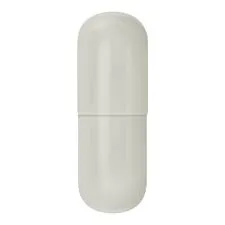
Nov . 27, 2024 14:18 Back to list
Exploring the Versatile Applications of Redispersible Polymer Powder in Modern Industries
Applications of Redispersible Polymer Powder
Redispersible polymer powders (RDPs) have gained significant attention in various industries due to their versatility and performance-enhancing properties. These specially formulated powders consist of polymer emulsions that, upon drying, can be re-dispersed in water. This unique characteristic makes them ideal for a multitude of applications, especially in construction, adhesives, coatings, and other formulation technologies. In this article, we will explore some of the key applications of RDPs and their benefits.
1. Construction Industry
One of the primary applications of redispersible polymer powders is in the construction industry, particularly in cement-based products. RDPs are widely used in tile adhesives, self-leveling compounds, repair mortars, and external insulating systems. When incorporated into these formulations, RDPs enhance the mechanical properties of the final product, improving flexibility, adhesion, and water resistance.
For example, in tile adhesives, the addition of RDPs can help achieve better bond strength and reduce water absorption, contributing to longer-lasting installations. Furthermore, RDPs allow for improved workability, enabling easier application by construction workers. Their ability to enhance the performance of both interior and exterior applications makes them invaluable in modern construction practices.
2. Paints and Coatings
Another significant application of redispersible polymer powders is in the formulation of paints and coatings. RDPs enhance the film-forming properties of coatings, leading to improved adhesion, flexibility, and durability. When added to water-based paints, they help achieve a smooth finish and enhance the resistance of the coating to environmental factors such as moisture and UV radiation.
Moreover, RDPs contribute to the color stability of paints by preventing pigment sedimentation and ensuring even distribution of colorants. This property is crucial for manufacturers looking to create high-quality, aesthetic products that meet consumer demands. The use of RDPs in coatings also enables better application characteristics, such as increased open time and reduced drying time.
3. Adhesives and Sealants
.applications of redispersible polymer powder
The adhesive industry is another area where redispersible polymer powders are making a significant impact. RDPs enhance the performance of water-based adhesives and sealants by providing excellent bonding strength, flexibility, and elasticity. These properties are especially important in applications where materials are subjected to movement or stress.
For instance, RDPs are commonly used in construction sealants, where the ability to adapt to substrate movement is essential for a long-lasting seal. Additionally, in packaging adhesives, RDPs improve the adhesion to various substrates, including plastics, metals, and porous materials, allowing for a wider range of applications.
4. Dry Mix Mortars
The use of redispersible polymer powders in dry mix mortars has revolutionized the way these products are formulated and applied. RDPs significantly enhance the workability and performance of dry mix mortars, making them easier to mix, transport, and apply. They provide improved adhesion to substrates and increase the mortar's resistance to cracking and water ingress.
In addition, RDPs allow for better control over the properties of the dry mix formulations, enabling manufacturers to tailor their products for specific applications and performance criteria. This level of customization is crucial in meeting the diverse demands of the construction industry.
5. Other Applications
Beyond construction, paints, and adhesives, redispersible polymer powders find applications in various other industries, including textiles, paper, and ceramics. In textiles, they are used to improve the strength and durability of fibers. In the paper industry, RDPs act as binding agents, enhancing the tensile strength of paper products. In ceramics, they can be used to improve the properties of glazes and slips.
Conclusion
Redispersible polymer powders are versatile materials that offer numerous benefits across various industries. Their ability to improve adhesion, enhance flexibility, and resist environmental factors makes them indispensable in construction, coatings, adhesives, and many other applications. As industries continue to innovate and seek high-performance materials, the role of RDPs will undoubtedly expand, leading to new formulations and applications that further harness their unique properties. The future looks promising for redispersible polymer powders as they remain at the forefront of material science innovation.
-
What is HPMC?
NewsJun.06,2025
-
Understanding Redispersible Powder: The Future of Construction Materials
NewsJun.06,2025
-
Understanding RDP Powder: The Ultimate Solution for Your Construction Needs
NewsJun.06,2025
-
Pure HPMC: The Ideal Solution for Modern Construction and Building Materials
NewsJun.06,2025
-
Methyl Hydroxyethyl Cellulose: A Versatile Chemical Compound
NewsJun.06,2025
-
Hydroxyethyl Cellulose Power: The Essential Chemical for Various Industries
NewsJun.06,2025







